The 2020 Porsche 911 Carrera Downplays Its Performance Evolution
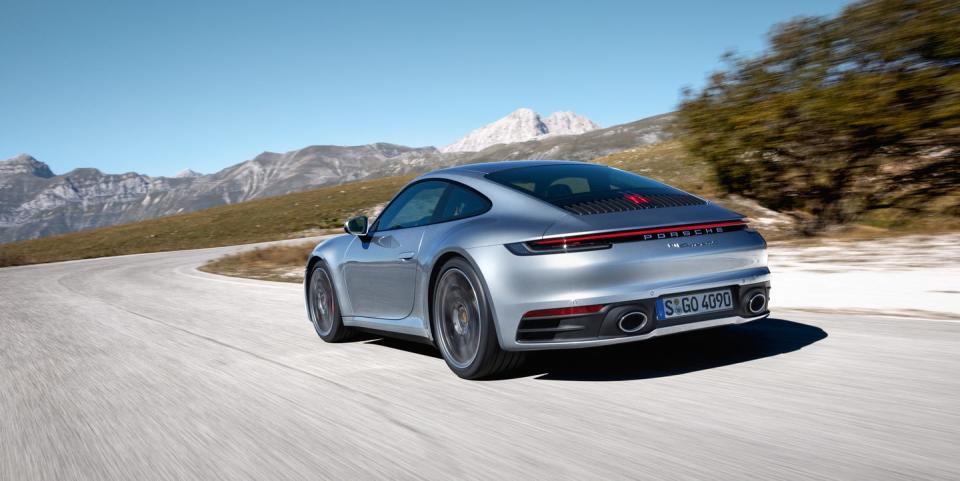
It's natural to question the unknown, especially when there's nothing wrong with the known. Take breakfast: Bacon and eggs work. No, it doesn't matter that the Waffle House dining room looks just like the bathroom. This is delicious. Newness can be intimidating and a little annoying at the morning table, as elsewhere. Sqirl-yep, that's how it's spelled-is a breakfast spot in the achingly hip Silver Lake neighborhood of Los Angeles that has the following items on its menu: urfa-dusted poblanos, sorrel pesto, whey-fermented lentils, and lacto-fermented hot sauce. Sure, you might recognize some of those words, but only a few millennials with the waxiest handlebar mustaches will understand them all.
It's a similar dilemma with the Porsche 911. Every new 911 is greeted with the same sort of skepticism as lacto-fermented hot sauce. Just as you might wonder what's wrong with hot sauce that fermentation-sorry, lacto-fermentation-could possibly make better, the 911 is never something fans think needs changing. Leave it alone, Porsche. We're still choking down the whole water-cooling bit.
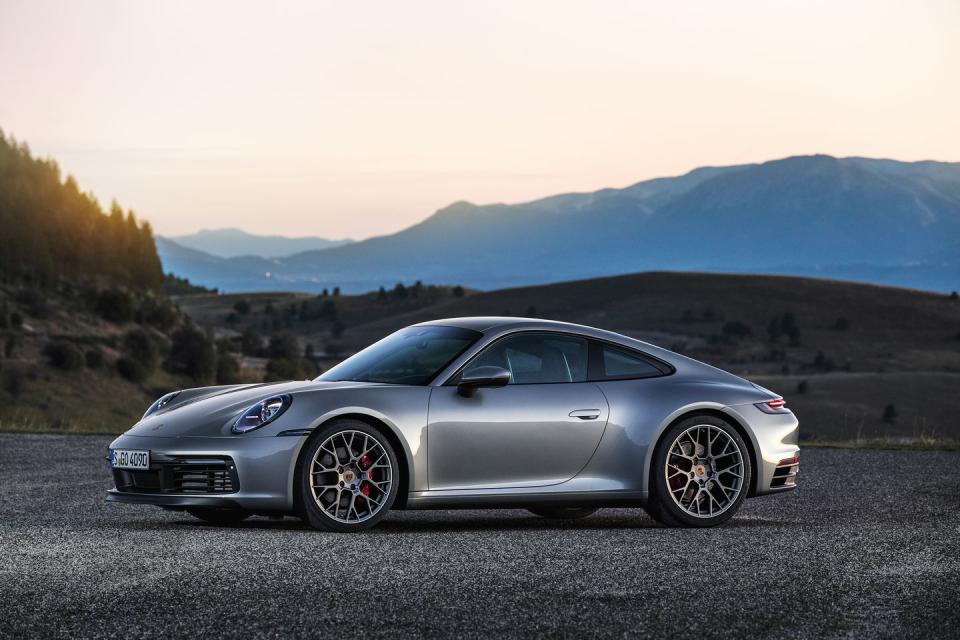
So here we are in front of an urfa-dusted 911, the 2020 model that will go on sale this summer. People who care will call it the 992. Everyone else will call it the 911, and to them, the design is the same as it has always been. The engine is still a little flat-six that sort of looks like a Rimowa suitcase bolted behind the rear wheels. The wheelbase remains 96.5 inches long, and the overall length is within an inch or so of the outgoing model's. So what's the fuss? Well, like a breakfast at Sqirl, the basics are there, but a lot of little changes might add up to something entirely different.
Every generation of 911 brings unsettling recipe changes. We worry that some of the simplicity that is the hallmark of a sports car will be eroded with every inch of physical and metaphysical expansion. Is it a full GT car at this point? All 911s have been suitable for daily use, but Porsche continues to widen the appeal of the 911, and this new car is its fiercest attempt yet to make it a user-friendly, supremely comfortable long-distance car. But Porsche wouldn't be doing its job if it didn't also improve the 911's track prowess.
So Porsche brought us to the Hockenheimring in the south of Germany for a taste test of the 992 Carrera S and 4S. What strikes us first is the eagerness of the front end to turn in toward apexes, and the grip and ease with which the 992 nears its very high cornering limits. The S's front track increases 1.9 inches, and its rear tires move outward 1.5 inches. That wider stance aids stability and seemingly helps the nose bite harder into corners. Not that the old 911 lacked stick. Nearly every 991.2 we tested put up 1.00 g or more on the skidpad, but even these daily-driver versions of the new car feel as if they have GT3 levels of grip.
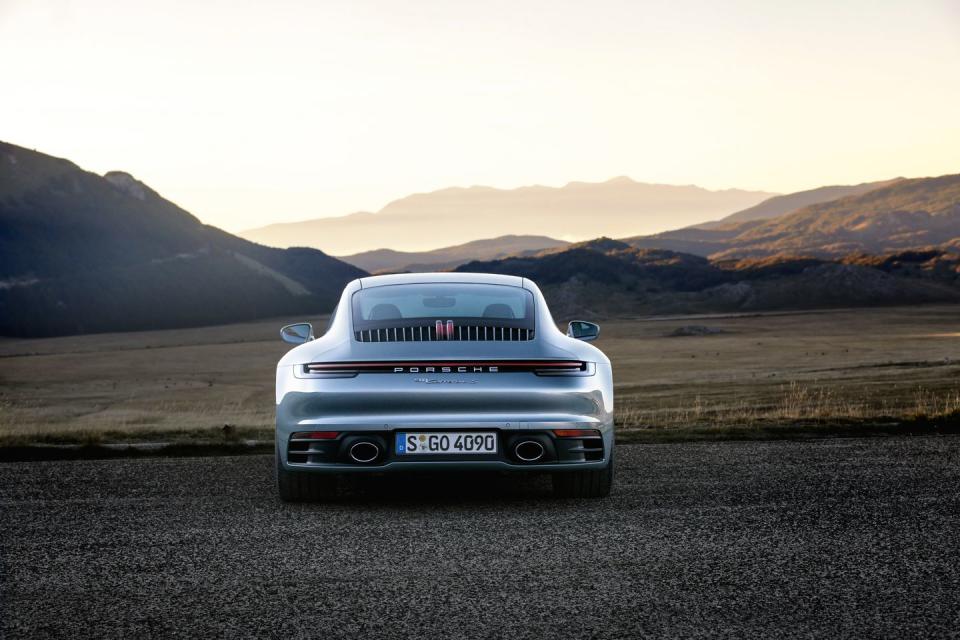
While the wider footprint has its benefits, there are also stiffer springs and new Pirelli P Zeros developed for the 992. On the base car, the springs are 15 percent stiffer in front and 14 percent firmer in back than the old 911's. Select the Sport package and the body drops by 0.4 inch and the rates go up by 18 percent in front and 23 in back. Keeping the springs in check are newly developed dampers that react more quickly than before. Four-wheel steering remains an option that undoubtedly contributed to the lively front end in the 911s we sampled.
Steering is still electrically assisted, but Porsche claims the responsiveness is now 11 percent quicker in the standard car. Feedback on the track is as good as its predecessor's, as is its faultless precision. The direct connection gels well with the newfound grip and sense of stability, reducing the apparent size of the wider and heavier 992. You might not be able to reach over and touch the passenger's-side door while sitting in the driver's seat-something you could do in the air-cooled cars-but the steering and chassis tuning mean the 992 drives small.
It has gained weight, though. By Porsche's own measurements, the 992 Carrera S is 163 pounds heavier than the old car and the 4S carries 158 more pounds. Those increases are in spite of the widespread use of aluminum; Porsche says that it reduced the amount of steel in the 911 from 63 percent in the 991.2 to just 30 percent in the 992. Body panels, the floor reinforcements, and several cast pieces such as the front-strut supports are made from an alloy of the 13th element.
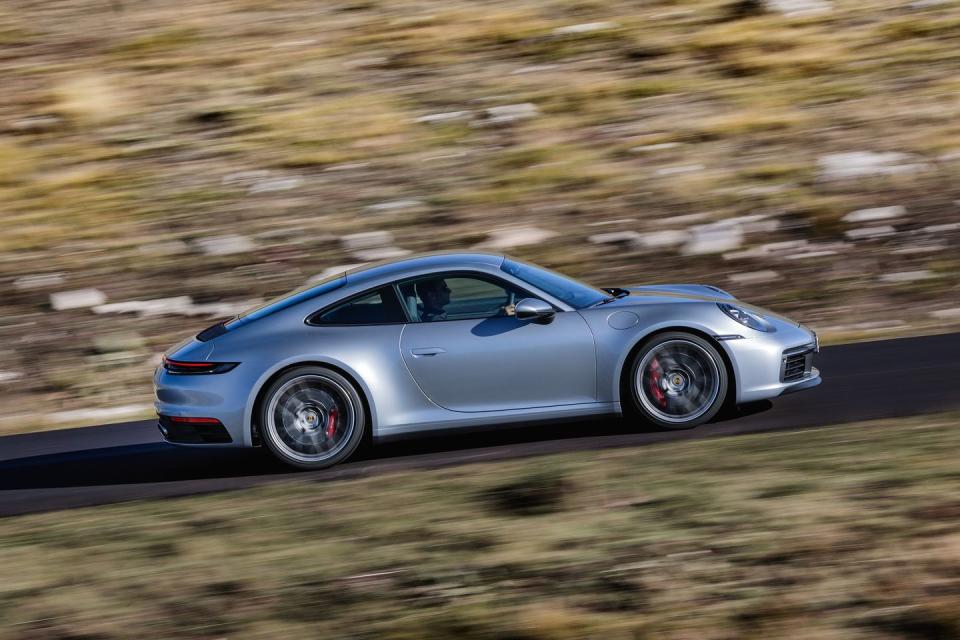
Under the wraparound taillights and raised PORSCHE lettering is a familiar twin-turbo 3.0-liter flat-six. Changes include new rear-engine mounts that move from a carrier behind the engine to the engine's sides, the better to control the six's movements. New turbochargers have larger turbine and compressor wheels (up by 0.1 and 0.2 inch, respectively), and in the interest of reducing turbo lag, the left and right turbos are mirror images, spinning their wheels in opposite directions to ensure that the exhaust from each cylinder bank travels the same path. Previously, the turbochargers were true identical twins, a situation akin to having two left arms, which resulted in asymmetrical plumbing. The intercoolers are 14 percent larger and move from behind the rear wheels to above the muffler, just below the decklid, to improve efficiency and airflow. On-track, the throttle response felt snappy good, but the 991.2's twin-turbo 3.0-liter is similarly great. If anything, from a standstill, the revised engine takes a few hundred more rpm to seem as if it's serious, but that could be due to strangulation by the exhaust-system particulate filter that is fitted to European models like those we drove. The U.S. will not get the filter.
Fans of the brand will recognize that the Carrera S's 443-hp engine is only one horse short of the output of the legendary Porsche 959. We expect the quickest rear-drive Carrera S to hit 60 mph in 3.1 seconds, while the all-wheel-drive 4S should hit the mark a tenth quicker. Those numbers are for the eight-speed dual-clutch PDK automatic, which now comes standard and is closely related to the dual-clutch auto introduced on the 2017 Panamera. Porsche promises that a seven-speed manual will become available after the initial on-sale date, so there's no need to get upset. Eggs, the kind from a chicken, are still on the menu.
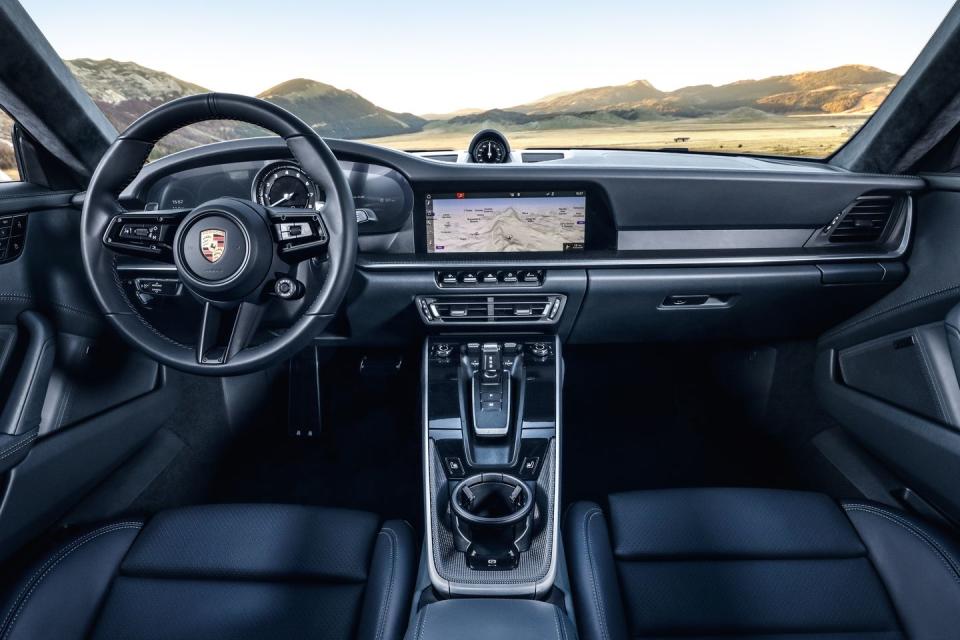
Should there be any poultry crossing the road, the 992's brakes, like those of all 911s, will get you stopped in time. To future-proof the 992 for hybridization, an electric brake booster replaces the vacuum-driven unit. That in itself is not a big deal, but a 911 with an electrically assisted powertrain is likely to become a reality before this generation is phased out. A new composite brake pedal that weighs two-thirds of a pound less is said to improve response, but the track examples we drove lacked the top-of-the-pedal bite of 911s past; brake feel is the one thing the old air-cooled 911s still do better.
A larger, 10.9-inch touchscreen pulled right from the Panamera and Macan updates the 911's interior. One change that doesn't work for us is the new door-handle design. Pulling the handle actuates an electric switch that operates the door mechanism. It's not foolproof, occasionally leaving you pulling the handle twice because it reacts too slowly. It's an annoying misstep from a company that kept the same door on the 911 from 1965 to 1998 because, as it said at the time, "It's a good door."
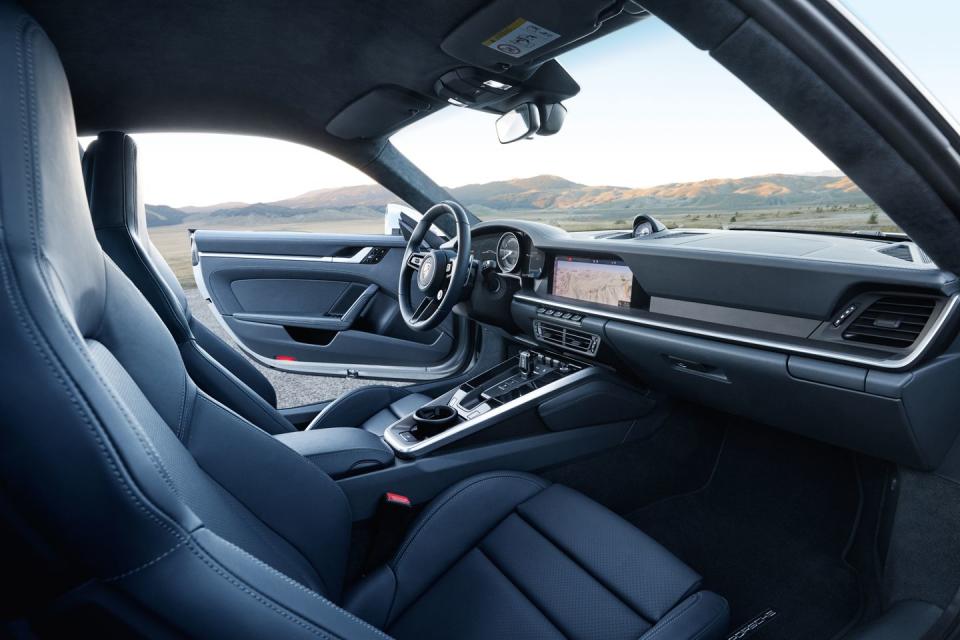
The cabin has grown slightly, but the rear seats are still sized for humans who dream of Disney cruises. Luftgekühlt attendees will note that the five-gauge cluster and dashboard arc remain, but the only mechanical dial is the center-placed tachometer. That tach is supposed to be retro, but the font that 911 gauges have carried for decades is missing. Many of the hard buttons that dotted the center console have been replaced by touch-sensitive areas that give off a little vibration when you hit them. The goofy shifter looks like an electric razor, and on the dash in front of it are five toggle switches for operating stability control, the hazard lights, and equipment-specific features such as the optional front-end lift. A few plastic pieces strike us as shinier than they should be in a car this pricey, but Porsche will happily cover anything in leather for a fee.
Even a brief taste of the new 911 made us confident that we'll be able to swallow and enjoy what Porsche has sprinkled into a car that we didn't think needed changing. Like your palate, 911s evolve. A dusting of urfa-turns out it's a dried Turkish chili pepper with a slight raisin flavor-makes roasted poblanos a little better. Lacto-fermented hot sauce is tangy and delicious. Whey fermenting doesn't add much to your lentil-eating experience because, like those door handles, not everything new is better.
('You Might Also Like',)

 Yahoo Autos
Yahoo Autos 